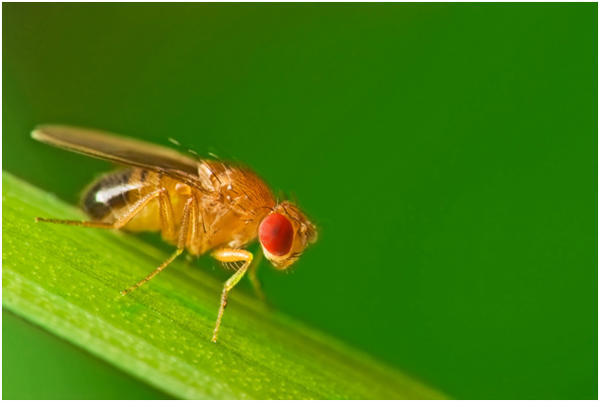- news
- 21-05-2015

The biological clockwork of human beings and flies is comparable
The Drosophila, the so-called fruit fly, attends all day long to its activities. It flutters, has naps, lays its eggs or emerges from the pupa, the stage of metamorphosis preceding maturity.
The team of Emi Nagoshi is closely interested in this insect, used as a model organism for the study of circadian rhythms in the animal kingdom. The researcher’s group discovered that the main clock of the Drosophila, formed by neurons clustered in various regions of the brain, is controlled by mechanisms similar to those regulating the internal clock of mammals. This study, described in the journal Current Biology, demonstrates how very distant organisms, displaying different circadian activities, can present the same type of biological clock gears.
In animals, rhythms of sleep, reproduction and nutrition are part of activities controlled by a clock nearing twenty-four hours -or “circadian”- and this in Drosophila as well as human beings. The diverse activities of the insect are controlled by a central pacemaker, composed of about 150 neurons clustered in various regions of the brain. Each of these neurons possesses a set of genes whose expression reaches a specific peak in twenty-four hours: the “clock genes”. The main clock, which is settled by the alternation of the day and night, synchronizes the peripheral oscillators that control the fluctuation of various processes of the organism during the day.
Nuclear receptors at the heart of the clock
“The rhythmic expression of the clock genes, which leads to the production of proteins, is the result of a loop of autoregulation: when the proteins reach a specific threshold, they indirectly repress their own gene expression”, explains Emi Nagoshi. In order to compare the clock gears of the Drosophila with ours, the scientist first looked for the missing pieces of the puzzle in the insect.
“In mammals, certain molecules belonging to the family of nuclear receptors play essential roles in the regulation of the circadian clock. We discovered that the Drosophila possesses a nuclear receptor homologous to the one present in humans, which also performs a crucial function in the regulation”, says Edouard Jaumouillé, first author of the publication of these results in Current Biology.
The hands of the clock point towards other directions
Although both homologous receptors do not act in an identical way, the fact that they modulate the expression of clock genes in Drosophila as well as in mammals demonstrates that very distant organisms, displaying different circadian activities, can present the same type of biological clock gears.
When the human and the fly eat, specific molecules that cross the membranes of cells and control the nuclear receptors are produced. “Our results contribute to strengthen the emergent hypothesis according to which the physiological states and the circadian clocks exercise a mutual control over one another, and that nuclear receptors play key roles in this process”, explains Pedro Machado Almeida, other co-author of the study. This is the next step that needs to be verified to better apprehend the twenty-four hour tempo which gives rhythm to the life of organisms.
